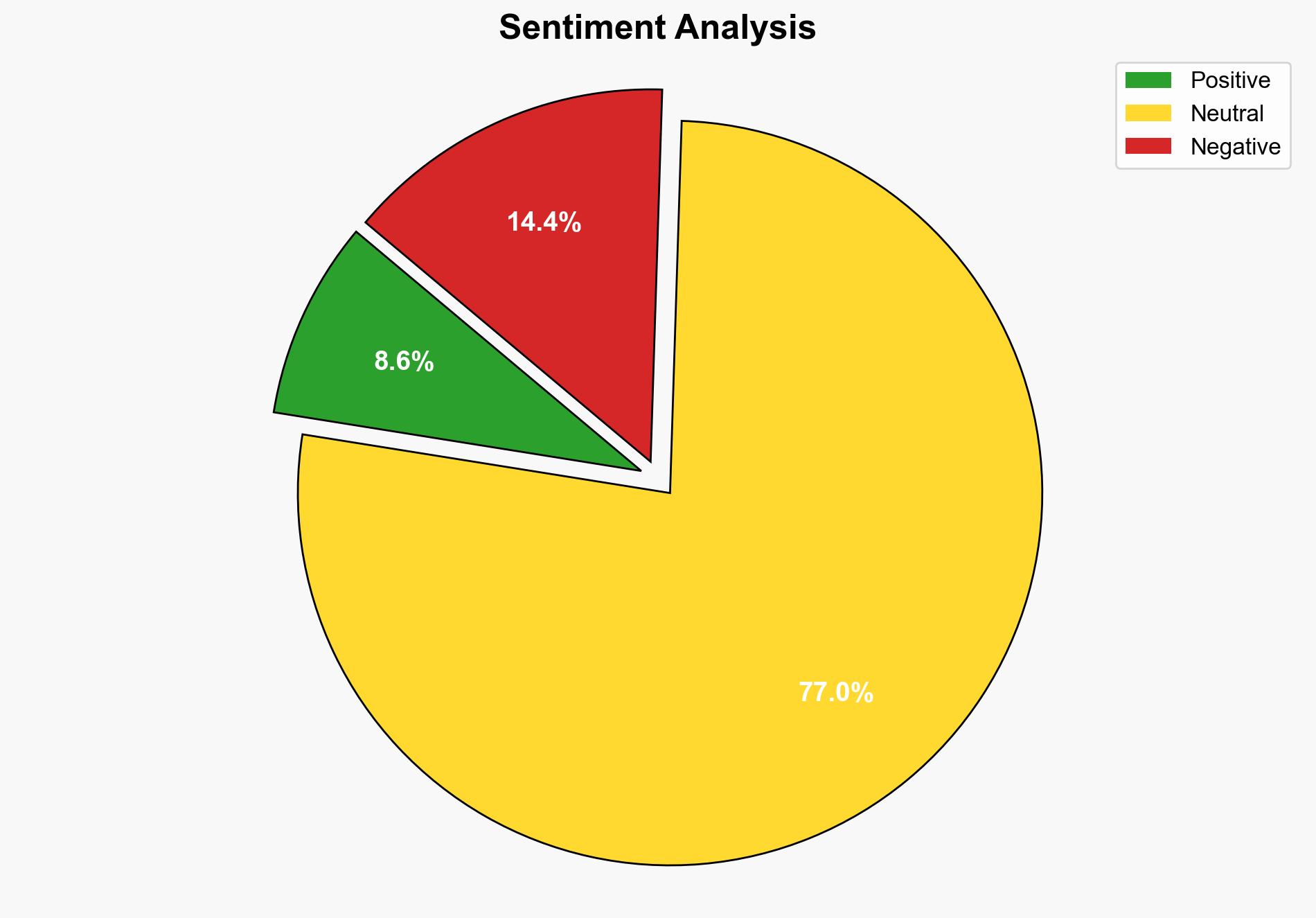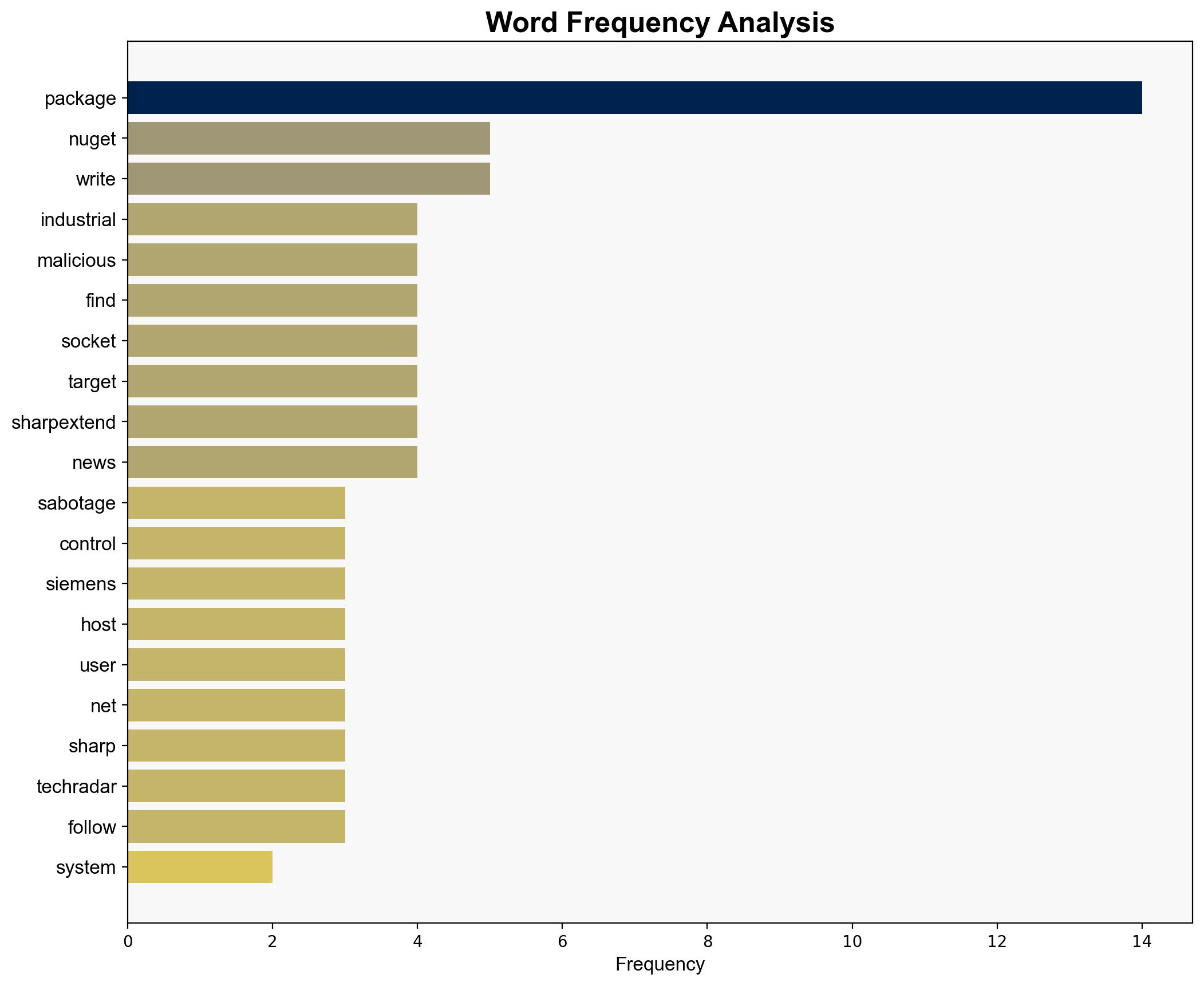Industrial computing systems at risk from time bombs in malicious NuGet packages – TechRadar
Published on: 2025-11-10
Intelligence Report: Industrial computing systems at risk from time bombs in malicious NuGet packages – TechRadar
1. BLUF (Bottom Line Up Front)
The most supported hypothesis is that a sophisticated threat actor is using malicious NuGet packages to target industrial control systems (ICS) with the intent to disrupt critical infrastructure. This conclusion is drawn with a moderate confidence level due to the specificity of the targets and the complexity of the attack. Immediate auditing and removal of the identified malicious packages are recommended to mitigate risks.
2. Competing Hypotheses
1. **Hypothesis A**: A state-sponsored actor is deliberately targeting industrial control systems through malicious NuGet packages to disrupt critical infrastructure as part of a broader geopolitical strategy.
2. **Hypothesis B**: A financially motivated cybercriminal group is deploying these packages to create chaos and potentially extort organizations for financial gain.
Using the Analysis of Competing Hypotheses (ACH) 2.0, Hypothesis A is better supported due to the strategic targeting of critical infrastructure and the sophisticated nature of the attack, which aligns with state-sponsored capabilities.
3. Key Assumptions and Red Flags
– **Assumptions**: It is assumed that the complexity of the attack requires significant resources, suggesting state sponsorship. Another assumption is that the primary goal is disruption rather than financial gain.
– **Red Flags**: The lack of attribution to a specific actor raises questions about the true intent and origin. The absence of immediate financial demands or claims of responsibility is inconsistent with typical cybercriminal behavior.
– **Blind Spots**: Limited information on the full scope of affected systems and potential undiscovered packages.
4. Implications and Strategic Risks
The attack poses significant risks to national security by potentially disrupting critical infrastructure sectors such as energy, manufacturing, and transportation. This could lead to economic instability and heightened geopolitical tensions. The psychological impact on public trust in digital infrastructure is also a concern.
5. Recommendations and Outlook
- Conduct comprehensive audits of all NuGet packages in use within ICS environments.
- Enhance monitoring and incident response capabilities to detect and mitigate similar threats.
- Engage in international cooperation to attribute the attack and hold responsible parties accountable.
- **Best Case Scenario**: Rapid identification and removal of all malicious packages prevent any significant disruption.
- **Worst Case Scenario**: Failure to identify all malicious packages leads to widespread infrastructure failures.
- **Most Likely Scenario**: Partial disruption occurs, prompting increased cybersecurity measures and international collaboration.
6. Key Individuals and Entities
– Siemens: Manufacturer of the targeted PLCs.
– TechRadar: Source of the report.
– BleepingComputer: Reported on the delisting of malicious packages.
– Shanhai Accord: Mentioned as a host account in the report.
7. Thematic Tags
national security threats, cybersecurity, counter-terrorism, regional focus





